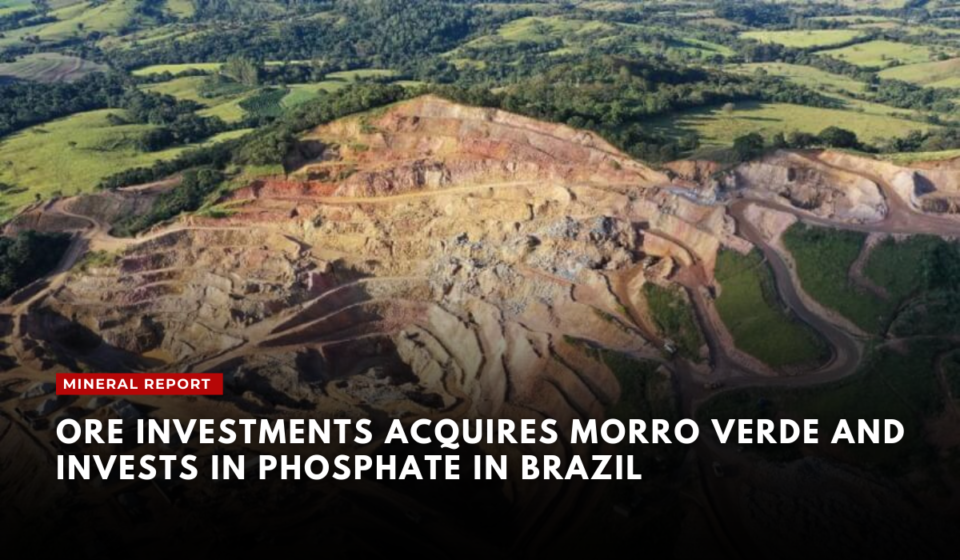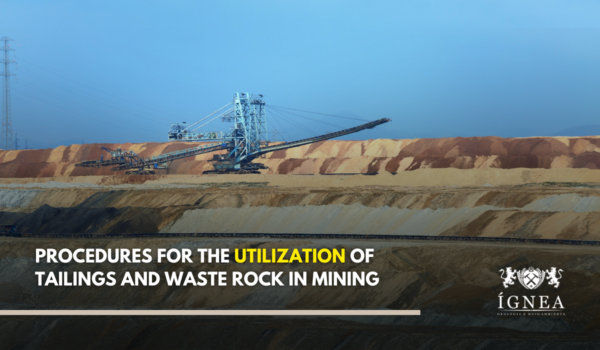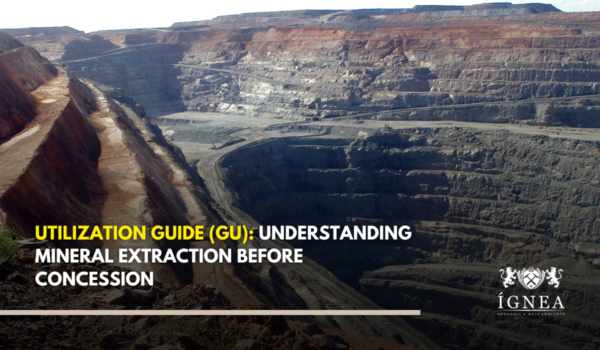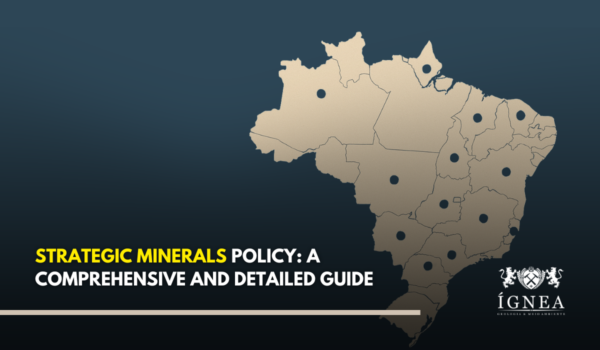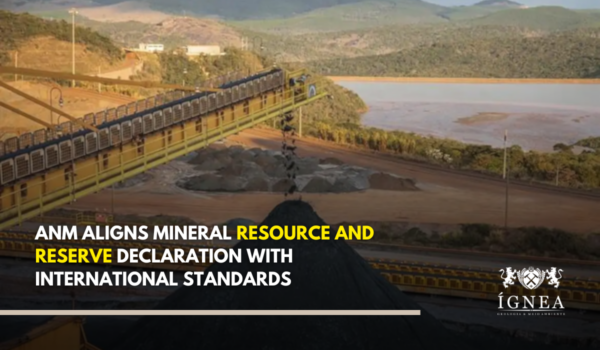Ore Investments, a renowned private equity manager focused on the mining sector, finalized the acquisition of the controlling stake in Morro Verde, one of Brazil’s leading producers of phosphate fertilizers. This acquisition confirms the growing interest in the exploration of strategic mineral resources and solidifies Morro Verde’s position in the national mining landscape.
Situated in the region of Pratápolis, in Minas Gerais, Morro Verde’s mine holds substantial proven phosphate reserves, totaling 50 million tons, with an average concentration level of 10%, twice the national average.
Currently, Morro Verde maintains an annual production of 400,000 tons of phosphate, but with Ore’s investment support, aims to raise this capacity to 1.5 million tons per year. This significant increase will ensure an estimated mine lifespan of around 60 years.
Mauro Barros, CEO of Ore Investments, highlighted that the manager conducted a thorough analysis of all potential phosphate production assets in Brazil, and Morro Verde stood out as the superior choice.
Barros mentioned that Morro Verde presents a unique combination of high tonnage volume and average deposit concentration, making it highly strategic for the market.
Furthermore, Morro Verde operates in a sector experiencing an annual growth rate exceeding 30%, gaining ground against chemical and imported fertilizers, which currently represent 85% of fertilizer consumption in Brazil. Felipe Holzhacker, founder of Morro Verde, commented:
‘We are at the confluence of two important trends: food security and carbon emission reduction. We have developed fertilizers suitable for tropical climates and regenerative agriculture, sectors growing at a rate of 30% per year, in contrast to the 2% to 4% of the chemical fertilizer market.’
Unlike chemical fertilizers, which involve the use of ammonia, sulfuric acid, or chlorine in their production process, natural fertilizers and biofertilizers do not incorporate chemical substances, composed only of microorganisms, organic matter, or biological agents.
Aside from being more environmentally friendly, from a production cost perspective, they are also more effective because they don’t use these complex inputs, and they are not energy-intensive,’ said Mauro.
To finance this strategic investment, Ore Investments is mobilizing an exclusive fund. Part of the resources, around US$15 million, comes from the manager’s first fund, which has already raised US$60 million, while the rest is from co-investors, mainly family offices. Although the total investment amount hasn’t been disclosed, Ore Investments stated that the US$15 million from the first fund represents a minority fraction, less than 25% of the total amount.
The transaction primarily encompasses primary acquisitions but also involves a secondary component providing liquidity to the founder and other angel investors who entered the company in its early stages.
Pratápolis Mine
Discovered in 2013, the Pratápolis mine commenced operations three years after its identification. Ore Investments’ acquisition won’t result in significant leadership changes, as Felipe Holzhacker will remain as the company’s CEO and continue as the majority shareholder through his holding.
Holzhacker outlined an ambitious plan for Morro Verde, aiming to invest over R$500 million in the next five years to expand the mine’s production and introduce new products. Funds for this endeavor will come from both Ore’s investment and the company’s internal cash generation.
 Currently, Morro Verde markets two products: reactive natural phosphate and dolomitic limestone, widely used in sugarcane cultivation.
Currently, Morro Verde markets two products: reactive natural phosphate and dolomitic limestone, widely used in sugarcane cultivation.
However, the company intends to introduce a biofertilizer called BioRocha, natural potassium, and a polynutrient into the market, especially suitable for soybean and corn crops.
Morro Verde recorded a revenue of R$150 million last year, with an EBITDA margin of 50%. Substantial revenue growth of 30% to 40% is expected for the current year, driven by new higher-value-added products.
Mauro Barros highlighted that Morro Verde represents a long-term interest asset. Given that Brazil faces a structural deficit in phosphate supply, Morro Verde’s strategic location in the Triângulo Mineiro places it in a privileged position to cater to the Southeast and Midwest regions of the country.
Mauro mentioned that Morro Verde is an asset ‘we would like to buy and hold because Brazil structurally lacks the product, and in the Triângulo Mineiro, you are right in front to sell to the Southeast and Midwest.’
However, as an exit strategy, ‘we see the possibility of M&A with large chemical fertilizer producers looking to diversify or with major product consumers looking to verticalize the business,’ he said. ‘Another possibility is an IPO.’
Source: Brazil Journal – Pedro Arbex
Edition: ÍGNEABR

